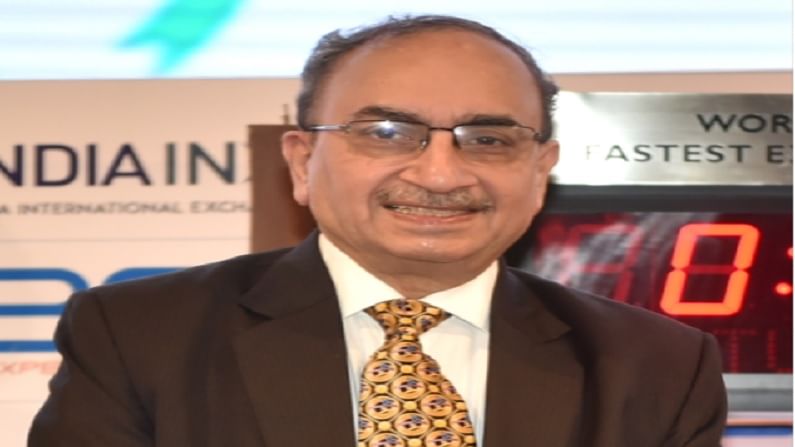SBI better positioned to tackle any subsequent Covid-19 wave: Chairman Dinesh Khara
I am cautiously optimistic that the performance trajectory for the FY2021 will continue in FY2022 as well, SBI Chairman Dinesh Kumar Khara said
- Press Trust of India
- Last Updated : June 25, 2021, 19:41 IST

Mumbai: The country’s largest lender State Bank of India (SBI) has adjusted to the challenges presented by the Covid-19 pandemic and is well poised to deal with any further pandemic-induced disruptions, its Chairman Dinesh Kumar Khara said.
He said the bank is comfortably placed in terms of growth capital and it will explore opportunities for lending in promising sectors to diversify the portfolio and to contain the risks.
“The bank has adjusted to the challenges posed by the Covid-19 pandemic and is better positioned to tackle any subsequent wave,” Khara said while addressing the bank’s shareholders at the 66th annual general meeting held virtually.
“I am cautiously optimistic that the performance trajectory for the FY2021 will continue in FY2022 as well,” he said. During the financial year ended March 31, 2021, the bank reported the highest-ever standalone net profit of Rs 20,410 crore against a net profit of Rs 14,488 crore in the previous year.
The gross NPAs ratio declined to 4.98% in FY21 from 6.15% in the last year. The PCR (provisioning coverage ratio) also improved to 87.75%.
Khara said the business continuity plans that were chalked out have worked well for the bank, and it was reflected in various parameters of the consolidated financial statements as of March 2021.
He said the current financial year 2021-22 has begun with an unexpected second wave of Covid-19 infections. Although the containment strategy this time included avoiding complete lockdown and managing the situation through micro-containment zones, the impact on the economy will nevertheless, be felt, he said.
In the current financial year, Khara said the bank will continue to accelerate its digital agenda. The scope and the reach of YONO will be expanded further.
“With the roll-out of pre-packaged insolvency for resolution, resumption of courts and formation of the National Asset Reconstruction Company (NARCL), efforts will be in full force to keep the momentum in stressed asset recovery in the current financial year,” Khara informed the shareholders.
He said the bank is committed to creating an environment of increased risk awareness at all levels. It also aims at constantly upgrading controls and security measures, including cybersecurity measures, to ensure the mitigation of various risks.
Khara said the lender has been tracking the credit portfolio very closely during the current pandemic. The internal control mechanism of the bank has also been strengthened, wherever required.
With the current capital adequacy ratio at around 13.74%, the bank is fairly comfortable on the capital front. “We are expecting about 9% credit growth and we are well equipped to take care of this kind of credit growth,” Khara later said while answering shareholders’ questions.
He said that currently, the bank has 406 loss-making branches and it has made an appropriate action plan to revive them.
The lender has got a definite timeline to turn around the loss-making branches in the near future. It has strategies that include focussing on high yielding advances, improving fee-based income, a sharper focus on the government business and customer value enhancement products, he said.
“We are strictly monitoring the implementation of these action plans,” he told shareholders.
In extreme cases, if at all, a loss-making branch cannot be turned profitable, the bank is providing CSP (customer service point) and correspondent channel to serve the customers and reduce the number of such branches, he said. During the year, the bank wrote off Rs 34,000 crore of loans, he said.
Khara added that despite the second wave of Covid-19, the country’s economy is poised for a recovery in FY2022.
Download Money9 App for the latest updates on Personal Finance.
Related
- बैंक ऑफ महाराष्ट्र ने रिटेल लोन दरों में 0.25 प्रतिशत की कटौती की
- इंडसइंड बैंक का बड़ा कदम, डेरिवेटिव अकाउंट में मिली गड़बडि़यों की वजह पता करने के लिए पेशेवर कंपनी की नियुक्त
- बैंक जमा पर बीमा की सीमा बढ़ाने से बैंकों के मुनाफे पर होगा असरः इक्रा
- बैंक डूबा तो अब मिलेंगे 8-12 लाख! सरकार बढ़ा सकती है इंश्योरेंस लिमिट
- बंद हो गया बैंक अकाउंट, SIP भी है लिंक तो तुरंत करें ये 5 काम
- J&K बैंक को SEBI की चेतावनी, 1 फीसदी से ज्यादा टूटा शेयर; जानें पूरा मामला

